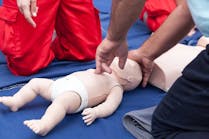New Technology May Improve Doctors' Ability to Diagnose Coronary Artery Disease
A new technology has shown promise in improving doctors’ ability to diagnose potentially deadly coronary artery disease (CAD).
The technique “allows doctors to quantify blood flow,” representing an “advance in cardiac magnetic resonance imaging (CMR) used in conjunction with stress testing to diagnose coronary artery disease, a condition which affects 70% or more of people over 60.” New research from UVA suggests that “combining CMR with blood-flow data offers a superior way to identify patients with CAD.”
The new technique “outperformed human experts examining images, the researchers found.” Heart disease is “the leading cause of death in America…and coronary artery disease is the most common form of heart disease.”
CMR stress testing is a historically useful way to spot coronary artery disease, but this new research “suggests that ‘quantitative’ CMR with blood-flow data is even better. To determine that, [researchers] launched a clinical trial at 10 sites around the world, testing quantitative CMR in 127 patients with a mean age of 62.” They found that “adding data on blood flow significantly improved CMR’s ability to identify obstructive coronary artery disease. Fifty-six patients, or 44% of the study participants, were found to have obstructive CAD, while 71 had nonobstructive. The enhanced CMR proved more effective at detecting obstructive CAD than both traditional CMR and human physicians reading scans.”

Matt MacKenzie | Associate Editor
Matt is Associate Editor for Healthcare Purchasing News.





